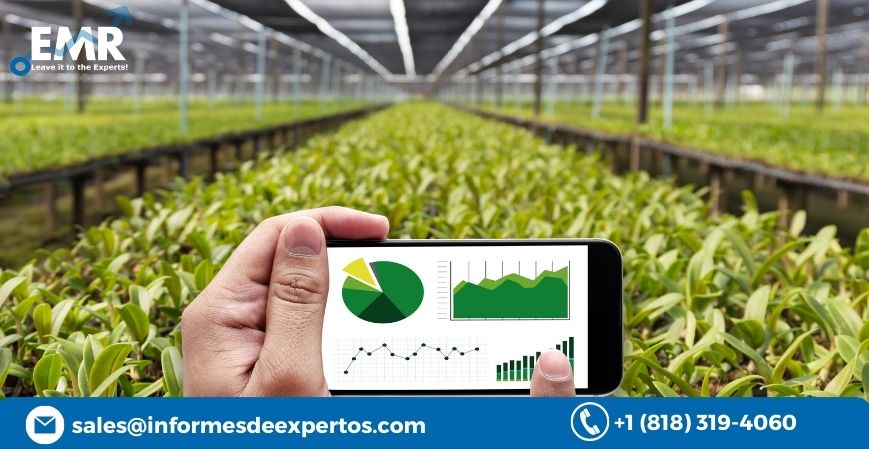The agricultural industry has undergone significant advancements in recent years, and one such area that has gained prominence is the use of agricultural adjuvants. These additives play a crucial role in optimizing the performance of pesticides, fertilizers, and other agricultural chemicals, ultimately improving crop protection and increasing productivity. In this blog post, we will delve into the Agricultural Adjuvants Market, exploring its overview, components, market segmentation, benefits and applications, factors driving its growth, challenges, and barriers faced, as well as the market opportunities and future outlook.
Overview of the Agricultural Adjuvants Market
Agricultural adjuvants are substances added to agricultural formulations to enhance their effectiveness, stability, and application properties. They act as facilitators, improving the performance and target specificity of agrochemicals. These additives can be categorized into three main types: activators, utility adjuvants, and compatibility agents. Activators help in optimizing the uptake and translocation of pesticides within the plant, while utility adjuvants enhance the performance of herbicides, fungicides, and insecticides. Compatibility agents, on the other hand, assist in maintaining the stability and compatibility of different pesticide formulations.
What are the Components of the Agricultural Adjuvants Market?
Agricultural adjuvants are composed of various components that contribute to their unique properties and functionalities. Some of the common components include surfactants, oils, wetting agents, dispersants, emulsifiers, and compatibility agents. Surfactants play a vital role in reducing the surface tension of liquids, improving the coverage and spreading of agrochemicals on plant surfaces. Oils, such as crop oils and mineral oils, aid in increasing the adherence and penetration of pesticides into plant tissues. Wetting agents and dispersants improve the wetting and dispersion properties of formulations, enabling better absorption by plant surfaces. Emulsifiers assist in achieving stable emulsions, while compatibility agents ensure that various agrochemical formulations can be mixed and applied together without any adverse effects.
Market Segmentation
The agricultural adjuvants market can be segmented based on type, application, and region. By type, the market can be categorized into activators, utility adjuvants, and compatibility agents. Each type serves a specific purpose, allowing for precise targeting of pests, diseases, and weeds. In terms of application, agricultural adjuvants find widespread use in herbicides, insecticides, fungicides, and other crop protection chemicals. The market is further divided into regions, such as North America, Europe, Asia Pacific, Latin America, and the Middle East and Africa.
What are the Benefits and Applications of Agricultural Adjuvants Market?
The benefits of agricultural adjuvants are multifaceted. Firstly, they enhance the efficacy of agrochemicals, leading to improved pest control and disease management. By optimizing the absorption and translocation of pesticides, adjuvants help maximize their bioavailability, ensuring effective action against targeted pests. Moreover, these additives contribute to reducing the required application rates of agrochemicals, thus lowering production costs and minimizing environmental impact. Agricultural adjuvants also enable better coverage and adherence of chemicals to plant surfaces, reducing runoff and drift, and improving overall application efficiency. The broad range of applications includes crop farming, horticulture, and greenhouse cultivation.
Factors Driving the Agricultural Adjuvants Market
Several factors are driving the growth of the agricultural adjuvants market. Firstly, the increasing global population and the subsequent need for higher agricultural yields have created a demand for effective crop protection solutions. Agricultural adjuvants aid in improving the performance of agrochemicals, enabling farmers to achieve optimal crop production. Additionally, the rising adoption of precision agriculture techniques, such as integrated pest management and sustainable farming practices, has boosted the demand for agricultural adjuvants. These additives align with the industry’s focus on reducing chemical usage, minimizing environmental impact, and enhancing overall farm efficiency.
Challenges and Barriers
While the agricultural adjuvants market offers significant opportunities, it also faces certain challenges and barriers. One such challenge is the lack of awareness among farmers regarding the benefits and proper usage of adjuvants. Education and training programs can play a crucial role in overcoming this obstacle. Additionally, regulatory frameworks and restrictions on the use of certain adjuvants pose barriers to market growth. Compliance with stringent regulations and ensuring the safety and efficacy of adjuvant products can be demanding for manufacturers.
Market Opportunities and Future Outlook
The agricultural adjuvants market holds promising opportunities for manufacturers, researchers, and farmers alike. As sustainable agricultural practices gain prominence, the demand for environmentally friendly and bio-based adjuvants is expected to surge. Moreover, the integration of advanced technologies, such as nanotechnology and precision farming, presents avenues for innovation in the development of next-generation adjuvants. Furthermore, the expanding global agriculture sector, particularly in emerging economies, offers substantial growth prospects for the agricultural adjuvants market.
Conclusion
Agricultural adjuvants play a pivotal role in enhancing crop protection and improving agricultural efficiency. As the industry continues to prioritize sustainable practices and optimal resource management, the demand for these additives is set to rise. By understanding the market’s components, segmentation, benefits, driving factors, challenges, and opportunities, stakeholders can position themselves to capitalize on this growing market and contribute to sustainable agricultural practices globally.
You may also like
-
Classified Websites in India: A Digital Marketplace for All
-
Why Sod Installation is the Quickest Way to a Beautiful Lawn?
-
The Role of Statutes and Case Law in Policy Limit Access
-
Setting Up a Home Theater with LG CineBeam Q The Ultimate Guide
-
Business Listing Sites in USA: 2025 Guide for Better Online Visibility

